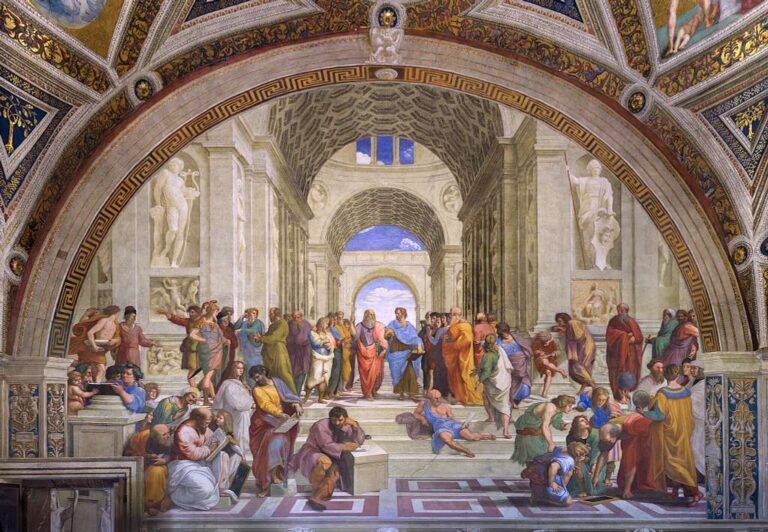The Renaissance
The Rebirth of Art, Thought, and Innovation
The Renaissance, period that ran from the 14th to the 17th century, marked a revolutionary revival in art, literature, science, and philosophy resulting in a fervent departure from the medieval mindset. This period in history was characterized by an insatiable curiosity about the world, coupled with a confident optimism regarding humanity’s potential to redefine the existing paradigms of thought and society. At the heart of the Renaissance, lay a profound inquisitiveness towards classical antiquity. Scholars and artists alike turned to the enduring texts and artifacts of ancient Greece and Rome, seeking inspiration to redefine their perception of beauty, proportion, and human achievement. The humanist movement, for instance, emphasized critical thinking and the potential of the individual, fostering an environment where artistic expression and intellectual inquiry could flourish side by side.
The transformative impact of this cultural revolution was perhaps best exemplified by iconic figures such as Leonardo da Vinci, Michelangelo and Raffaello Sanzio. Leonardo’s meticulous studies transcended the boundaries of art and science, reflecting a mind that was as fascinated with the minutiae of human anatomy as with the enigmatic mysteries of flight. Michelangelo, meanwhile, captured the sublime in sculptural form, resulting in the body emerging as a vessel of divine expression, imbued with both strength and vulnerability.

Literature also underwent a metamorphosis during this period. The advent of the printing press democratized knowledge, thus challenging the exclusivity of scholarly discourse and allowing for the rapid dissemination of ideas. Writers such as Dante, Petrarch, and later Shakespeare, harnessed the power of language to explore the human condition, delving deep into themes regarding love, destiny, and the eternal conflict between reason and emotion. Their works resonated with a universal appeal, offering both profound philosophical insights and intricate portrayals of individual experience.
On the scientific front, the Renaissance heralded significant advancements that reshaped humanity’s understanding of the cosmos. “Empiricism” began to take hold as scientists sought to observe and experiment rather than merely rely on established dogmas. This newfound spirit of inquiry eventually laid the groundwork for what would become modern science; an ever-evolving journey defined by systematic observation, hypothesis testing, and intellectual courage.
The Renaissance was also a period of considerable political and economic transformation. As burgeoning city-states challenged the centralized feudal order, power began to shift. This decentralization spurred innovative approaches to governance and commerce, setting the stage for the development of early capitalism. The interplay of artistic patronage and political ambition, particularly in cities like Florence and Venice, created a dynamic ecosystem where creativity was both celebrated and strategically harnessed to consolidate power.
In reflection, the Renaissance stands as a testament to the enduring spirit of human ingenuity. It encapsulated a pivotal moment where the synthesis of art and intellect redefined cultural landscapes. The legacy of this period reminds us that the pursuit of knowledge and beauty is not merely an escape from the mundane but a transformative endeavor capable of reshaping society itself.
For contemporary readers, the Renaissance offers more than a historical curiosity; it serves as an enduring example of how mankind was able embrace new ideas, and cultivate a world where creativity and critical thought converge to create lasting, positive change.
